

A global archive of independent reviews of everything happening from the beginning of the millennium
Read our Copyright Notice click here
For publication dates click here
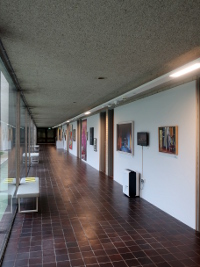
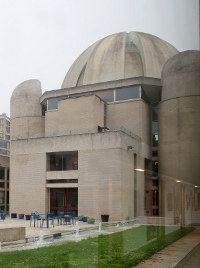

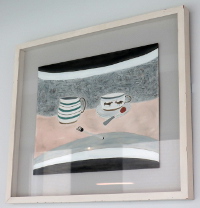 Rachel Nicholson, Still Life in Pink and Grey,
1992
Rachel Nicholson, Still Life in Pink and Grey,
1992
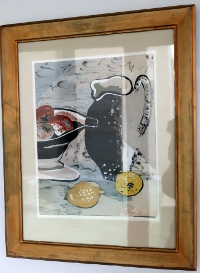 E.Q. Nicholson, Jugs and Quinces, 1946
(collage)
E.Q. Nicholson, Jugs and Quinces, 1946
(collage)
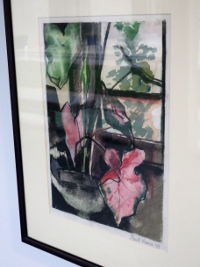 Harriet Macaree, Angel Wings by Window,
1977
Harriet Macaree, Angel Wings by Window,
1977
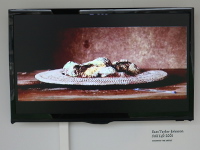 Sam Taylor-Johnson, Still Life, 2001 (35mm film,
colour, silent, duration 3 minutes 44 seconds)
Sam Taylor-Johnson, Still Life, 2001 (35mm film,
colour, silent, duration 3 minutes 44 seconds)
LIFE IS STILL LIFE
Reviewed by ANDRE BEAUMONT
I have never had the view that still life was a relegated or inferior art form, rather one extremely hard to do very well. When I see a religious or allegorical work by Rubens or Van Dyck I wonder at the feat of imagination, even though real models may have be used, but when I see a Flemish still life by one of their contemporaries, I learn a great deal about the way of life in the period and place that is largely absent in the great pieces of imagination.
However, I am grateful to the Life is Still Life exhibition in The Women's Art Collection at Murray Edwards College, Cambridge, formerly New Hall College, for putting the point that women may have been relegated to this art form.
I have learnt a great deal about still life, and acquired a new way of looking at it, at this show where the artists are solely women.
Women have not been relegated to the art form during the time that most of these works have been produced but the genre is stronger for having so much female input. The genre is thus pushed higher up the pecking order, if you conceive things in hierarchy, which I frequently eschew.
All the works here have been conceived in the domestic context. All the show's artists are mentioned here, though the light prevents proper photography of some works.
We have lived through the millennia of personal hierarchies - of the rule of royalty, aristocracy and religion. We have lived through more than a century and a half of the collective and the corporate. All remain, some a bit ossified. Institutions are ossified power.
We must now try, in terms of human development, to live through the age of the individual, however short or difficult to achieve it may be.
The corporate is the vanguard trying to resist this. The remains of the collective, still fighting the personal hierarchies of old, doffs its cap to it in the wake. Maybe it is has a role at the wake, if it comes.
(The pandemic has disabused us of the shibboleths that the state collective can provide - especially intellectually coherent healthcare, and war in Europe of those that corporations can provide - many will be left in poverty and hunger; in Britain we have had our first prime minister of the age of the individual and Brexit comes in behind the pandemic and Boris himself in influences on this nation in the 20twenties but the dice is still rolling. *
To playfully steal a little, the collector is not the collective and there has been a terrible accident or two.)
In this domestic context, the corporate is absent. Even the bleach bottle has the bokeh of obscurity. There are no brands in these still lives, only life. There is no commercial sponsorship.
So still life is in the avant garde of a new society, creating refuge and life away from drear edges.
Life is in still life.
Life is still life.
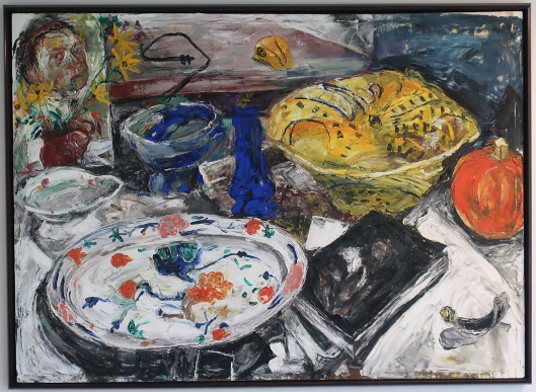
Shani Rhys James, The Collector, 1994
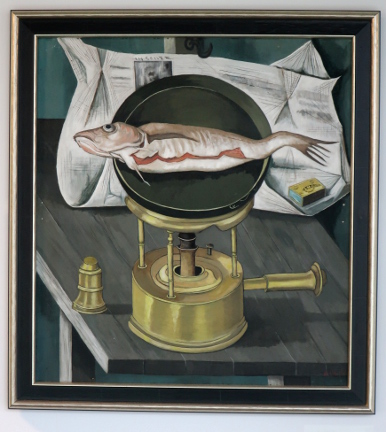
Arlie Panting, Haddock, 1955
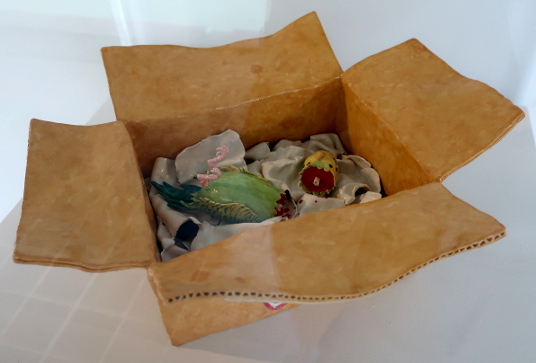
Katy Stubbs, There Has Been a Terrible Accident, 2022 (glazed stoneware)
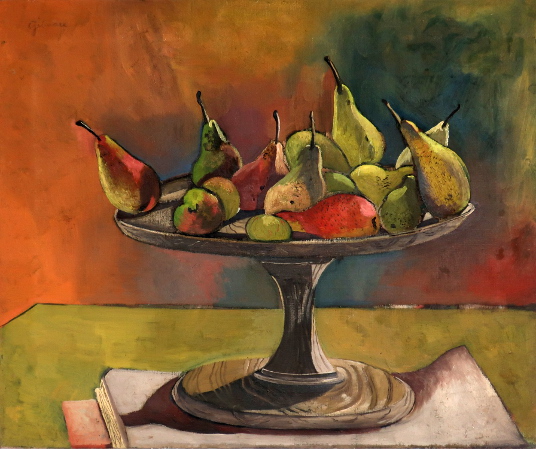
Maeve Gilmore, Still Life, Pears, c.1949-50
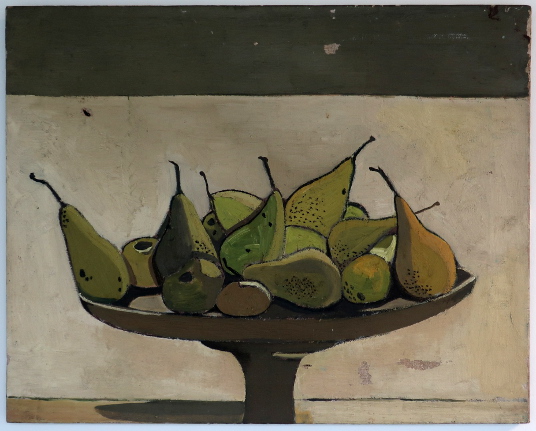
Maeve Gilmore, Still Life, Pears, c.1949-50

Hilary Peels, Breakfast Nook, 2021
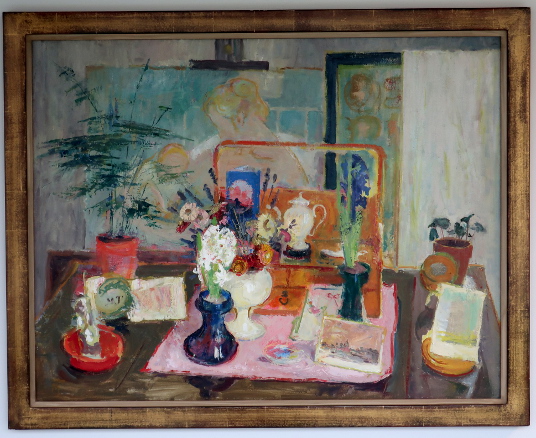
Margaret Thomas, Nativity Scene, 1960
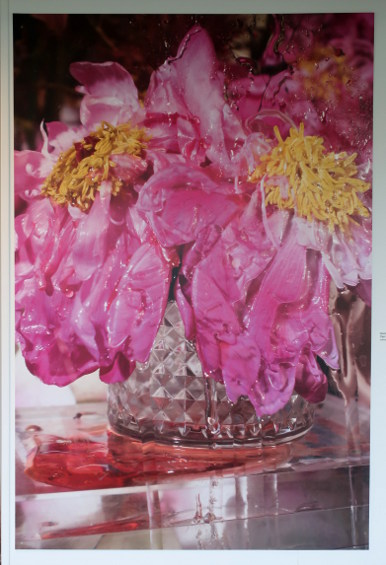
Maisie Cousins, Tiger Morse, 2017 (exhibition board)
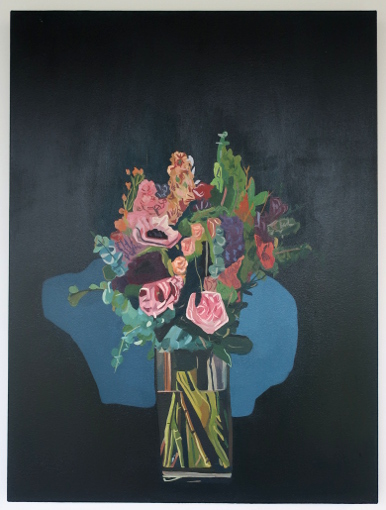
Joy Labinjo, Perfect by Nature for Gift and Centrepiece, 2022
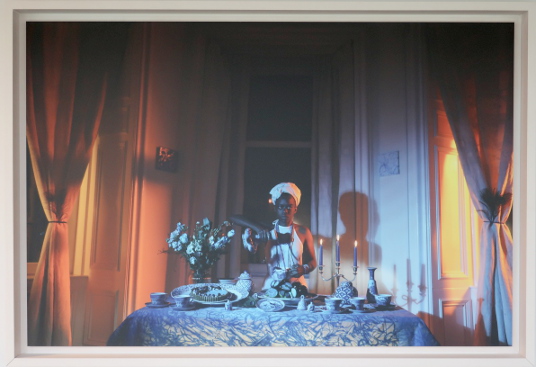
Sekai Machache, Hint of Blue 2, 2021 (digital print on aluminium)
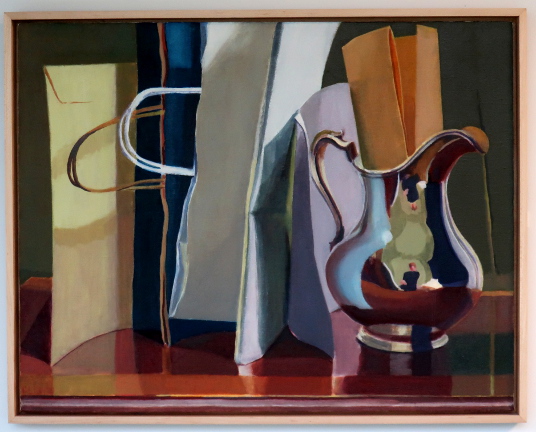
Phyllis Floyd, Pitcher and Bags, 2010
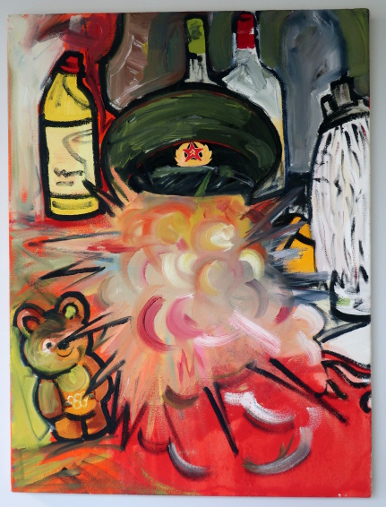
Anna Liber Lewis, Misha Bleach, 2012
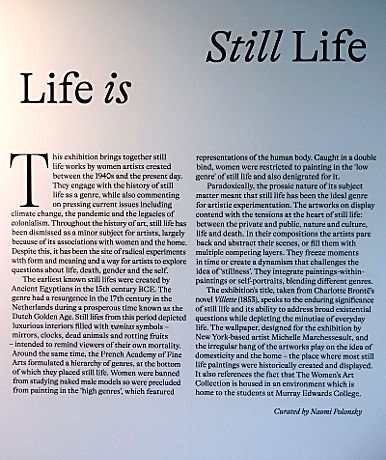
Wall text
* Coda